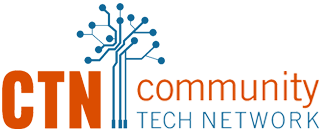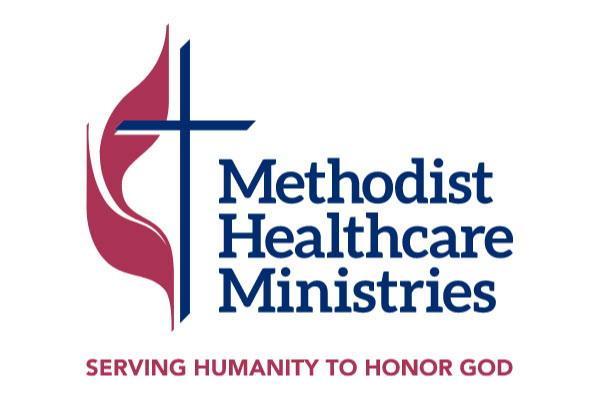In a continuing effort to bridge the digital divide in South Texas, Methodist Healthcare Ministries (MHM) and Community Tech Network (CTN) are making significant strides in enhancing digital equity across the region. With MHM’s commitment of more than $21 million over three years, this initiative is not just about providing access to high-speed internet but ensuring communities have the skills to leverage this access for better health, education, and economic mobility.
A Holistic Approach to Health
Monica Gonzalez, the Digital Equity Supervisor at MHM, underscores the importance of looking at health broadly to address patient needs. “We serve 74 counties across South Texas, and for the past 25 years, one of the things we’ve focused on is access to care. However, it’s more than just a doctor’s visit. We’ve broadened our approach to include social determinants that impact health, and have been looking at digital equity, economic mobility, and food security on top of access to care. We’re working to broaden the definition of patient healthcare by looking at a whole person and seeing how we can support them so that they can thrive and survive in today’s world.”
Connecting Health and Digital Equity
Unfortunately, Gonzalez says that about one in 12 Texas households do not have internet, with the number likely rising since the Affordable Connectivity Program (ACP) has ended. “Our 74 counties are a mix of urban and rural locations, and if people can’t travel to a hospital, they need telehealth availability. We’re making sure that we’re not only providing families with digital skills and devices, but also that affordability component.”
Eliseo “Eli” Ceja, Digital Equity Coordinator at MHM, adds, “Digital literacy is really important. If folks want to apply for benefit programs like SNAP, Medicaid, and Medicare, all of that is going on online now. My Texas Benefits is a scary website. It’s not friendly or easy; it’s very complicated. But folks have to apply through that website, and that’s when digital literacy [the skills to navigate the internet] is really necessary.”
Gonzalez continues, saying that, overall, “Digital equity means health equity. Because if we look at a person’s wellbeing, we can’t mention it without talking about technology. We find our resources online: food resources, as well as education, and job opportunities. And 92% of jobs require digital skills, so we need to make sure the workforce is prepared. People need economic mobility opportunities, and that starts with digital equity.”
Building a Collaborative Ecosystem
Once MHM decided to launch a digital inclusion initiative, they had to determine what that would look like. Gonzalez says, “Our board had the foresight in 2019 to focus on digital equity, but the COVID-19 pandemic in 2020 really highlighted the urgent need for connectivity. Our broadband feasibility study in 2021 revealed that while infrastructure is important, there’s also a significant need for devices, affordability, and skills. This feedback shaped our strategy to support digital equity programs over infrastructure.”
MHM then worked with a consulting firm and according to Gonzalez, “One of the things we knew we would need for our region was capacity building support. We saw CTN as filling some of that gap by providing support to our partners in the region.”
Thus, as part of this plan, MHM funded Community Tech Network to train the staff and volunteers from 30 agencies across the region to prepare them to either launch a digital equity initiative or improve their already-existing ones. This capacity-building training from CTN includes lessons on how to best teach digital skills classes, answer tech support questions, help community members access affordable home internet, and more.
Additionally, the grant enables CTN to provide each community partner with digital devices, curriculum to teach their technology courses, and other resources. CTN also deployed digital navigators to assist community members on the ground with their day-to-day questions related to internet adoption, devices, and basic technology skills.
Ceja emphasizes the importance of ecosystem building in all of this. “We want to make sure every community is well represented and nobody is left behind. Our goal is to bring everyone to the table to ensure folks are getting connected.”
The Path Forward
Gonzalez says since she and her team at MHM are “fairly new to digital equity,” there has definitely been a learning curve for them. However, the partnership with CTN has been very beneficial.
“I think knowing that we have partners like CTN who have been doing this for, you know, 10 plus years, makes our jobs easier. We’re not relying on just ourselves to do this work. We have great partners who have that expertise and commitment to help us execute our strategy.”
Going forward, when asked about her hopes for digital equity, Gonzalez says, “I always go back to my ‘why,’ like ‘why is this important?’ And it’s always about my parents. I come from a small rural town in south Texas, and I want to make sure people like them have digital access. It allows them to access telehealth and it reduces social isolation and so much more. We want to make sure that no community is left behind.”
For more information on community partnership with CTN under the MHM grant in Texas, please contact Senior Program Manager, Jessica Strom, at jstrom@communitytechnetwork.org.
If you’re interested in learning more about digital equity and healthcare, check out our online course, “Digital Equity and Healthcare,” which was developed in collaboration with MHM.


Comments are closed.